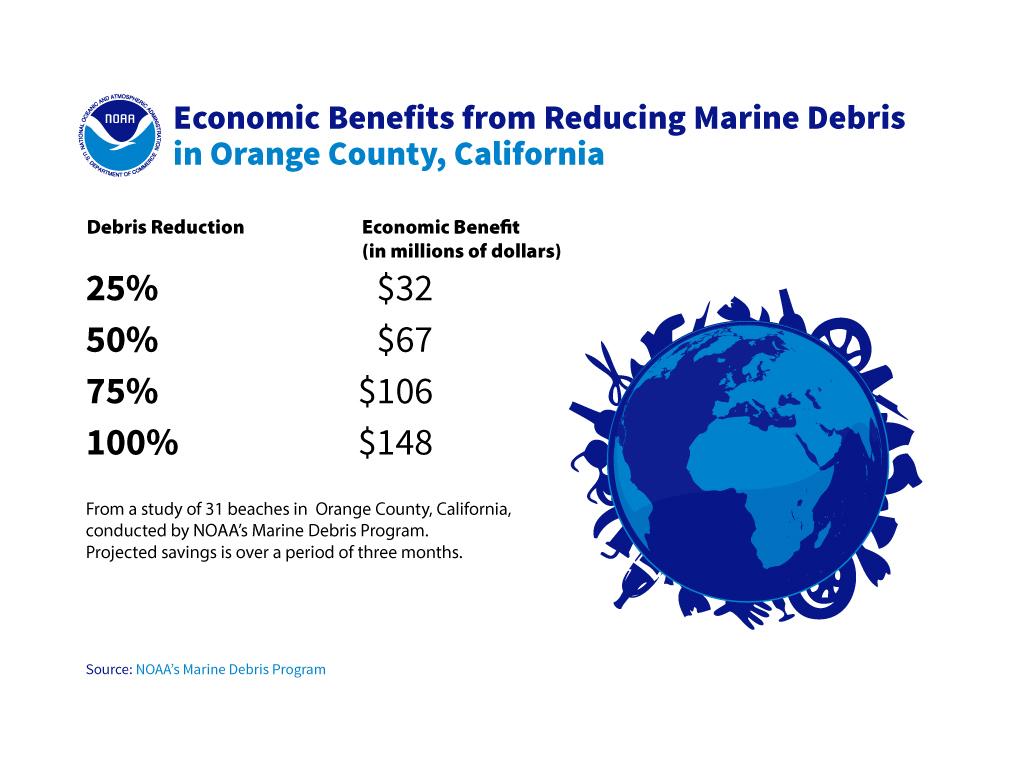Fast Facts / Marine Debris
Marine Debris
Marine debris is a global problem. The mission of the NOAA Marine Debris Program is to investigate and prevent adverse impacts from marine debris.
36,000 Metric Tons
Since 2006, the NOAA Marine Debris Program has supported over 180 marine debris removal projects across the country, removing 36,000 metric tons of debris from our oceans and coasts.
$32 Million in Three Months
A study in Orange County, California, found that reducing marine debris at beaches by even 25 percent could benefit residents by roughly $32 million from increased summer tourism and recreation.
800 Species
Worldwide, more than 800 species of marine life have been harmed by debris, with impacts that include injury, illness, and death.*
Types and Sources
Marine debris takes many forms, including derelict fishing gear and vessels, abandoned recreational equipment, and discarded consumer plastics, metals, rubber, paper, and textiles. Countless consumer items make their way into the ocean every day, while thousands of abandoned and derelict vessels litter ports, waterways, and estuaries.
Garbage Patches
All across the world, large areas of concentrated marine debris are formed by rotating ocean currents. These areas are known as garbage patches and are mostly made up of microplastics that swirl throughout the ocean’s water column.
Extreme Impacts
The ramifications of marine debris are many: economic losses, habitat damage (including to fragile coral reefs), hazards to navigation resulting in costly vessel damage and loss, potential invasive species transport resulting in expensive and devastating effects on ecosystems, and wildlife injury, illness, and death.
Less Trash, More Cash
A team of researchers found that by removing derelict crab pots in certain active fishing areas, harvest of blue crabs could increase by 23.8 percent (38 million pounds), which translated to $33.5 million over the study period.
Vulnerable Sea Life
Marine debris can impact a large variety of marine life, from small microorganisms to humpback whales. Animals may inadvertently eat debris or become entangled in it. For instance, plastic bags are a common threat to sea turtles, which often mistake them for a common food item—jellyfish. Marine debris affects other species as well, such as the endangered Hawaiian monk seal, where one death caused by marine debris is a huge loss.

Source: NOAA’s Marine Debris Program
Report: 2017 Marine Debris Program Accomplishments Report
*Source: Secretariat on the Convention of Biological Diversity